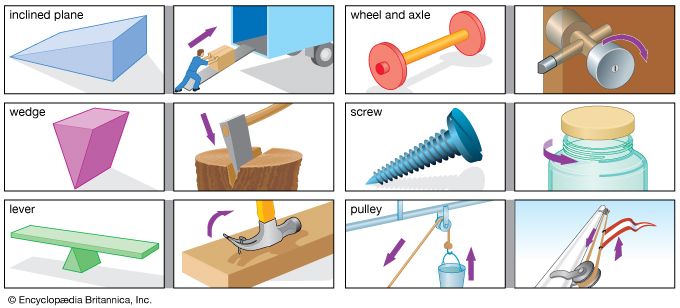pulley
Our editors will review what you’ve submitted and determine whether to revise the article.
- Key People:
- Sir Marc Isambard Brunel
- Related Topics:
- machine
- simple machine
- block and tackle
pulley, in mechanics, a wheel that carries a flexible rope, cord, cable, chain, or belt on its rim. Pulleys are used singly or in combination to transmit energy and motion. Pulleys with grooved rims are called sheaves. In belt drive, pulleys are affixed to shafts at their axes, and power is transmitted between the shafts by means of endless (ends joined together) belts running over the pulleys. One or more independently rotating pulleys can be used to gain mechanical advantage, especially for lifting weights. The shafts about which the pulleys turn may affix them to frames or blocks, and a combination of pulleys, blocks, and rope or other flexible material is referred to as a block and tackle. Archimedes (3rd century bc) is reported to have used compound pulleys to pull a ship onto dry land. Together with the lever, wedge, wheel and axle, and screw, the pulley is considered one of the five simple machines. See also belt drive; block and tackle.















